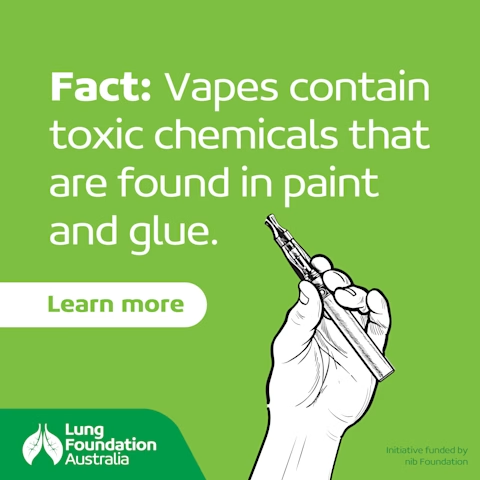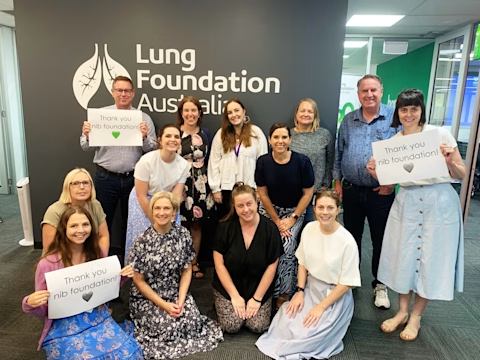Challenging the myths around vaping

Find out more about Lung Foundation Australia's latest study into the rise of vaping, or e-cigarette use amongst young people.

While young Australians may be less inclined to take up smoking in its traditional cigarette form, the latest study from Lung Foundation Australia tells us that vaping, or e-cigarette use amongst young people is on the rise. In fact, the majority of participants interviewed (74%) aged 18-24 indicated they’d tried vaping out of curiosity.
A selection of flavours to choose from – like mint, mango, and berry - young vaping is often also perceived as the “healthier alternative” to traditional cigarettes. However, as an unregulated product, Lung Foundation Australia believe it’s important for Australians to know what they’re inhaling.
It’s why we’ve extended our partnership with Lung Foundation Australia with an additional $40,000 from our People’s Choice Vote, to support their new campaign Unveil What You Inhale - to provide the facts to young people on the health risks associated with vaping to better inform their lifestyle decisions.
The campaign is backed by groundbreaking research from Curtin University which was first presented at the National Vaping and Young People Roundtable in 2020, an event we are also proud to have supported. The research revealed that:
100% of the e-liquids were inaccurately labelled;
100% contained chemicals with unknown effects on respiratory health; and
62% contained chemicals likely to be toxic if vaped repeatedly.
The campaign also highlights the harmful health impacts associated with these chemicals. These can include:
severe irritation when inhaled
vomiting
chest pain
racing heartbeat
links to the development of lung cancer.
While vaping products might have fewer chemical additives than combustible tobacco products, they still contain and emit many harmful compounds, including Formaldehyde (found in glue), acrolein, and Propylene glycol (found in paint). Other chemicals used in e-liquid flavouring were known to be safe for use in other consumer or retail products, however they remain untested for their impacts on short and long-term respiratory health when inhaled.
By supporting this campaign, we hope to better equip young people and their families with the information they need to make informed decisions relating to their short and long-term health.
Visit Lung Foundation Australia's article to learn more, opens in a new tab.

Apply for our Health Smart Grants!
We’re calling on charities across Australia and New Zealand to apply for our 2021 Health Smart Grants!

Survey suggests Aussie teens overestimate their peers’ smoking and drinking habits
For World No Tobacco Day, Life Education has released their Reality Now survey results, indicating that high school students overestimate their peers use of tobacco, alcohol and cannabis.

Meet our People’s Choice recipient!
Thanks to your votes, one Health Smart partner has received an extra $40,000 in funding!